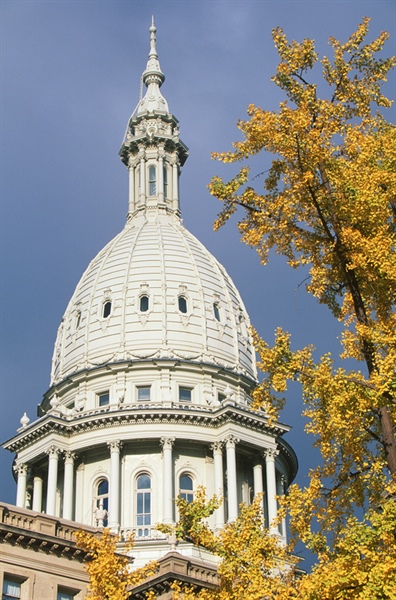
When Gov. Rick Snyder rolled out his Marshall Plan with its $100 million price tag earlier this year, it wasn’t made clear where the money would come from.
But Snyder found a piggybank to pay for his jobs plan in what’s known as the “Student Loan Operating Fund,” and now $100 million from that fund is heading into the Marshall Plan next fiscal year.
So, what is this Student Loan Operating Fund, and how could it afford
Back in the day, the state and other entities were involved in issuing student loans. In Michigan, the Michigan Higher Education Student Loan Authority (MHESLA) issued bonds to finance student loans, Treasury spokesperson Ron Leix said.
But in 2010, there was a changeover to direct federal student loans. For that reason and because of the financial crisis, the Michigan Finance Authority (MFA) — which had absorbed the MHESLA — ended the private loan program.
But the MFA still has to deal with the outstanding loans, as well as pay off the bond debt that financed those loans.
The outstanding loans amount to $570 million, which students
Back to the Student Loan Operating Fund that the Marshall Plan is being funded from: The balance in that fund is $140 million, as it draws income from interest on MFA loans, administrative fees, investment earnings, and other sources, according to Treasury.
Also, the MFA has refinanced outstanding student loan bonds, and excess cash has been released into the fund after bonds have been refunded.
Based on the advice of the financial advisor in charge of the student loan program, the MFA really only needs $30 million to $40 million sitting around to cover any unforeseen circumstances, like federal changes to student loan repayment requirements or an increase in loan deferments.
That leaves $100 million in surplus funds – the exact amount Snyder called for in the Marshall Plan. Ultimately, the administration and lawmakers reasoned the extra money would be “more effectively used for career training than to sit unused in this fund,” Leix said.
However, state law restricts the use of the Student Loan Operating Fund, which prompted SB 0942, allowing $100 million to be lifted out of the student loan fund into a newly created Talent Investment Fund. Then, SB 0941 makes the appropriation from the Talent Investment Fund into the Marshall Plan initiatives.
So how will the MFA be able to pay back its bond obligations? The MFA takes the repayments from those outstanding loans, plus cash reserves, to pay back the bonds, Leix said. In other words, the bond debt is essentially being taken care of by the student loan borrowers paying back their loans.
Leix said the MFA will repay these bonds, not the state — the MFA is autonomous — and while it’s housed in Treasury, it operates separately from the department.
The Student Loan Operating Fund has been tapped previously, according to Treasury. The law was amended in 2007 to allow $95 million to be used for certain state scholarships and grants, which actually helped address budget shortfalls.